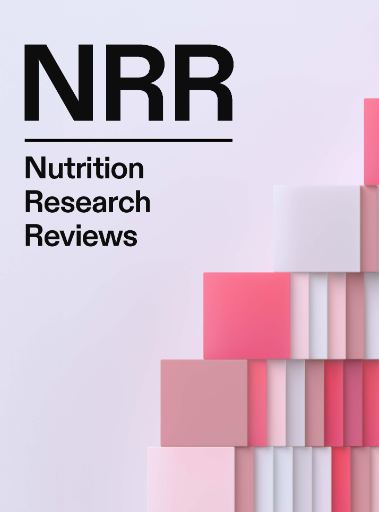神经酰胺是脂质代谢受损、饱和脂肪酸摄入量和胰岛素抵抗之间的分子联系:神经酰胺介导的脂肪毒性是否应归咎于所有饱和脂肪酸?
IF 4.5
2区 医学
Q1 NUTRITION & DIETETICS
引用次数: 0
摘要
2 型糖尿病(T2DM)是一种代谢紊乱疾病,在全球范围内已达到流行病的程度,对人们的健康和生活质量造成了巨大的影响。从病理角度看,T2DM 是由胰岛素抵抗驱动的,胰岛素抵抗被定义为组织对胰岛素的反应迟钝,从而导致慢性高血糖。从机理上讲,脂肪毒性,尤其是骨骼肌和肝脏中神经酰胺的细胞内蓄积,是胰岛素抵抗的主要代谢畸变基础。事实上,细胞内神经酰胺的积累会阻碍胰岛素信号转导途径,从而促进胰岛素抵抗。本综述将概述神经酰胺积累所导致的代谢缺陷,以及神经酰胺影响胰岛素信号传导的分子机制。此外,还将讨论特定神经酰胺亚种作为 T2DM 潜在生物标志物的作用,以及长链和中链饱和脂肪酸作为神经酰胺代谢调节剂的作用。本文章由计算机程序翻译,如有差异,请以英文原文为准。
Ceramides as the molecular link between impaired lipid metabolism, saturated fatty acid intake and insulin resistance: are all saturated fatty acids to be blamed for ceramide-mediated lipotoxicity?
Type 2 diabetes mellitus (T2DM) is a metabolic disorder that has reached epidemic proportions worldwide, posing a huge treat on people’s health and quality of life. From a pathogenetic prospective, T2DM is driven by insulin resistance defined as a blunted response of tissues to insulin which leads to chronic hyperglycaemia. Mechanistically, lipotoxicity and particularly the intracellular accumulation of ceramides in the skeletal muscle and the liver, is a primary metabolic aberration underpinning insulin resistance. Indeed, intracellular ceramide accumulation can hamper insulin signal transduction pathway thereby promoting insulin resistance. This review will provide an updated overview of the metabolic defects underlaying ceramide buildup and the molecular mechanism by which ceramides imping upon insulin signalling. Additionally, the role of specific ceramide subspecies as potential biomarkers for T2DM and the role of both long- and medium-chain saturated fatty acids as a modulator of ceramide metabolism will be discussed.
求助全文
通过发布文献求助,成功后即可免费获取论文全文。
去求助
来源期刊

Nutrition Research Reviews
医学-营养学
CiteScore
16.10
自引率
1.80%
发文量
30
期刊介绍:
Nutrition Research Reviews offers a comprehensive overview of nutritional science today. By distilling the latest research and linking it to established practice, the journal consistently delivers the widest range of in-depth articles in the field of nutritional science. It presents up-to-date, critical reviews of key topics in nutrition science advancing new concepts and hypotheses that encourage the exchange of fundamental ideas on nutritional well-being in both humans and animals.
 求助内容:
求助内容: 应助结果提醒方式:
应助结果提醒方式:


